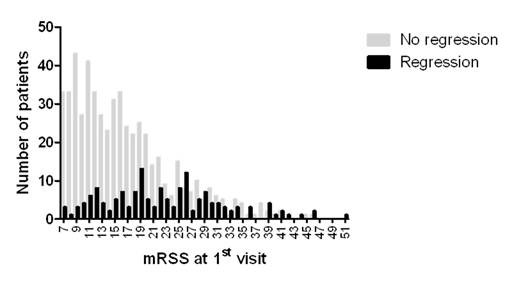Session Information
Session Type: Abstract Submissions (ACR)

Disclosure:
R. Dobrota,
Pfizer Inc,
2;
B. Maurer,
None;
N. Graf,
None;
C. Mihai,
None;
O. Kowal-Bielecka,
Abbvie, Actelion, Pfizer,
5,
Abbvie, Actelion, Pfizer,
8;
Y. Allanore,
Bayer Pharma, Actelion, Pfizer, Sanofi-Aventis, CSL Behring, Roche,
5,
Bayer Pharma, Actelion, Pfizer, Sanofi-Aventis, CSL Behring, Roche,
2;
O. Distler on behalf of the EUSTAR investigators and co-authors,
Actelion, Pfizer, Ergonex, BMS, Bayer, United BioSource Corporation, Roche/Genentech, medac, Biovitrium, Boehringer Ingelheim Pharma, Novartis, 4D Science, Active Biotec, Sinoxa, Sanofi-Aventis, Serodapharm, GSK, Epipharm,
5,
Actelion, Pfizer, Ergonex, Sanofi-Aventis,
2.
« Back to 2014 ACR/ARHP Annual Meeting
ACR Meeting Abstracts - https://acrabstracts.org/abstract/prediction-of-improvement-in-skin-fibrosis-in-diffuse-cutaneous-systemic-sclerosis/
